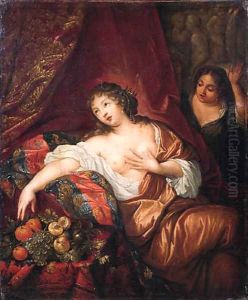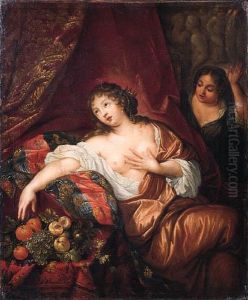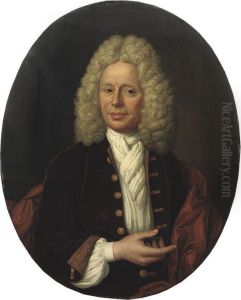Herman Collenius Paintings
Herman Collenius, born in 1650 in Kassel, Germany, was a painter whose career blossomed in the Dutch Golden Age, a period in the 17th century when Dutch art, science, trade, and military were among the most acclaimed in the world. Collenius is often associated with the city of Groningen in the Netherlands, where he moved to in 1671 and where he would become a leading artist.
Collenius was trained by the artist Matthias Stom in Hamburg, and his early works were influenced by Stom's dramatic use of light and shadow, characteristic of the Caravaggisti, followers of the Italian Baroque painter Caravaggio. After settling in Groningen, Collenius became renowned for his portraits, and he was in high demand among the local elite and the university faculty. His paintings were known for their fine detail, rich colors, and the ability to capture the personalities and social stature of his subjects.
Apart from portraiture, he also worked on historical subjects and decorations for local buildings, demonstrating a versatility that was much appreciated in his time. Collenius's work can be seen as a reflection of the cultural and economic prosperity of Groningen during the late 17th and early 18th centuries. His legacy includes a large body of work that provides a window into the society of his time, and his portraits, in particular, continue to be studied for their artistry and historical value.
Collenius passed away in 1723 in Groningen. His contributions to the Dutch Golden Age, especially in the realm of portraiture, have ensured his reputation as a significant figure in the history of Dutch art. Despite the fact that he may not be as widely known as some of his contemporaries like Rembrandt or Vermeer, Collenius's work remains an important part of the artistic heritage of the Netherlands.



